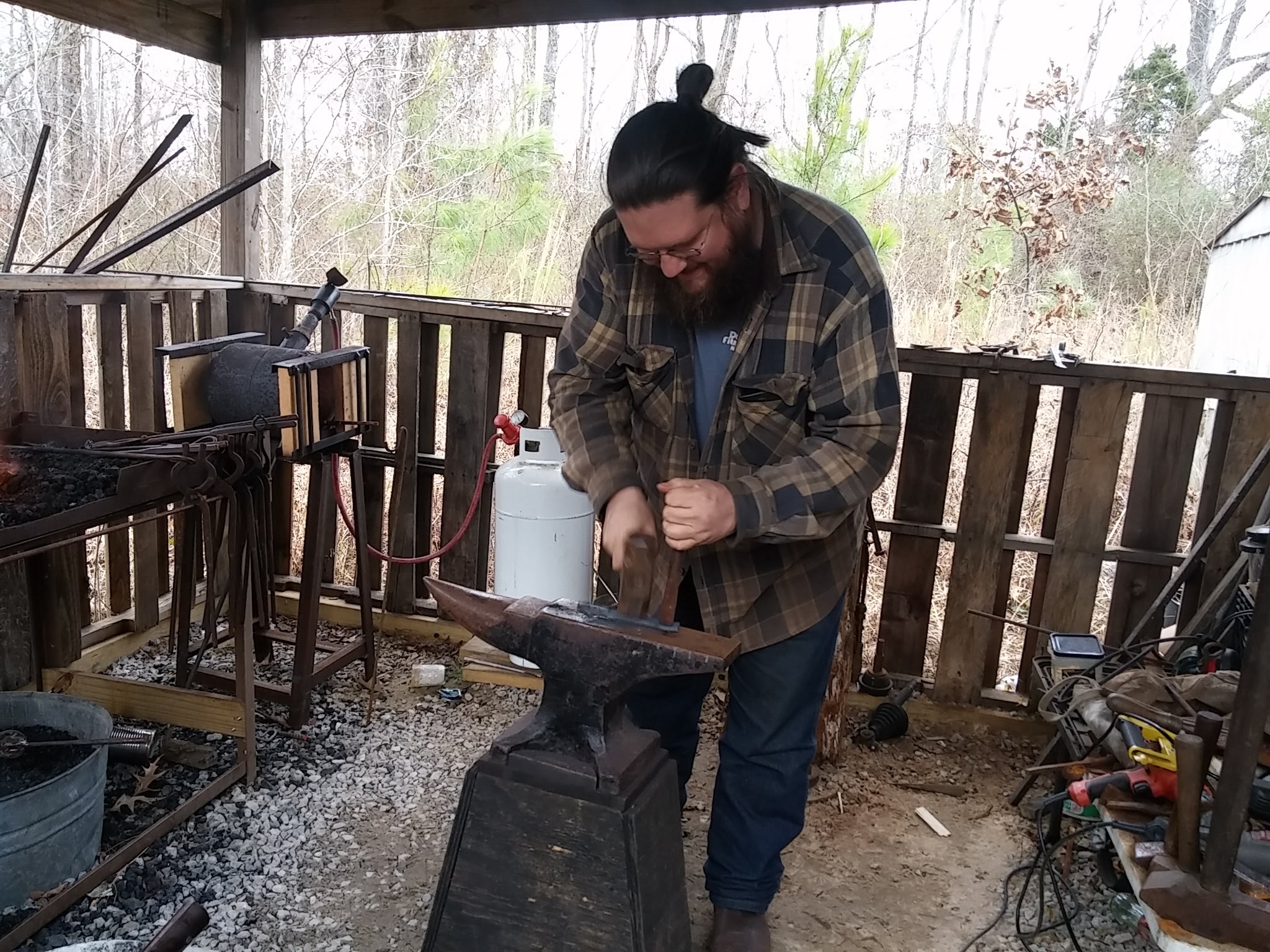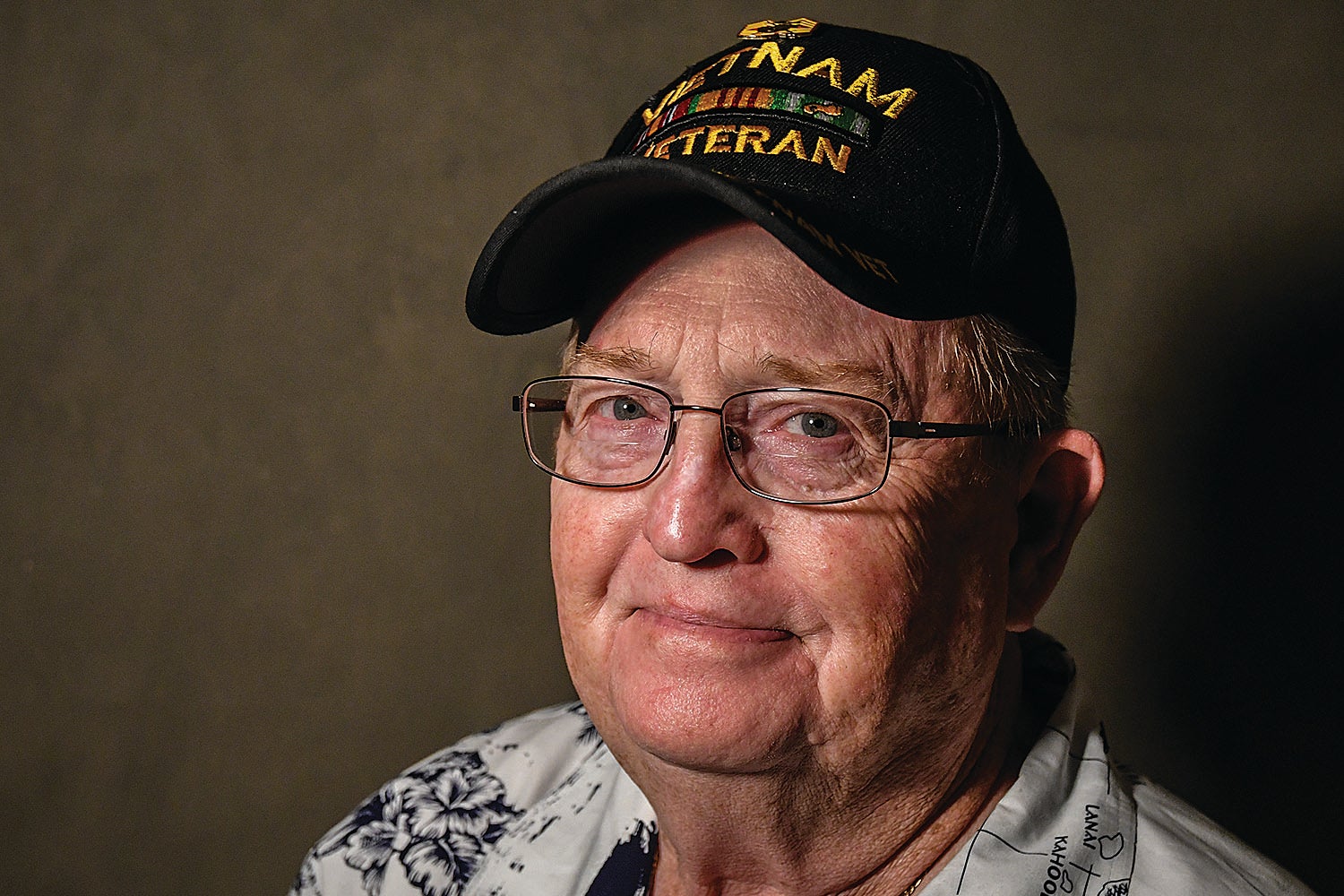Oxford artist makes metal his trade
Published 6:00 am Sunday, February 14, 2016
Jonathan Smith is one of very few blacksmiths in America these days.
The 38-year-old Union County native has explored a couple of different careers and decided creating everything from jewelry to sculptures with metal is what he wants to stick with and has for the past two years.
His work brings him to Oxford regularly: to the Maker’s Market, the University Museum for demonstrations, the Powerhouse, events with the Oxford Artist’s Guild, the annual ornament auction and much more.
Smith does mostly traditional blacksmithing, but has been applying it to more contemporary products and creations.
“I’d always been interested in being a blacksmith,” he said. “My grandfather did blacksmithing and had stopped by the time I came along. I played in his shop. He mostly repaired plows, wagons and things like that. There’s not that much demand for that, at least not using a blacksmith.”
Coming full circle
Growing up, Smith spent a chunk of his time in Oxford with his mother who played basketball for the University of Mississippi.
“My aunt lived in Oxford growing up and my mother finished her master’s degree when I was 12, so I lived on campus,” he said. “I took swimming classes and hung out at the library when she was in class, so it’s not quite a second home but it’s a place I’ve been familiar with for years.”
He later attended the University of Mississippi, earning a degree in anthropology with an emphasis on archaeology.
“I worked in that for several years and ended up going on to get a master’s degree,” he said, “but a few years ago the change in the economy cut back on a lot of those jobs. I worked as a field archeologist and project manager for a company out of New Orleans and was in the culture resource management sector. Basically it’s when a new highway, gas pipeline, things like that go in, we go ahead and do the survey for archaeological sites.”
That gig, as well as working for the company that handled the BP oil spill, took him across the Southeast.
“I went to graduate school in North Carolina, came back and worked in New Orleans, worked in West Virginia,” he said. “I worked with the company that handled the BP oil spill from Florida to Louisiana. So it’s been funny. I’ve made this big circle across the Southeast and ended back in my hometown.”
While that hometown is New Albany, he said, “I like Oxford and I like doing things here” in Oxford.
His craft
It was when one of the companies he was working for downsized that Smith saw the opportunity to take some blacksmithing classes.
“I had enough money put back to take introductory classes and thought it would be a part-time hobby,” he said. “I started doing the art markets and it was enough to start to think about doing it full time.”
He’s been doing the Maker’s Market ever since he picked up blacksmithing.
“It’s become one of my regular markets,” he said. “It’s just fun to do. You get to know everybody. It’s not the biggest market I do but it’s enjoyable and you get to see people here and make a little. It’s really helped as a year-round market.”
For the markets he does a lot of jewelry, hooks, small pieces of home décor, fireplace sets, small spoons, key rings and more.
He’s created a few sculpture-type pieces, and one is in the collection at the Union County Heritage Museum. It’s inspired by the William Faulkner novel “As I Lay Dying.”
His work “ranges from stuff that would fall under the umbrella of art-like sculptures to more functional items like bottle openers and spoons,” he said.
Something like an S hook takes him a few minutes, but other things, like the trophies he is making for the upcoming Oxford Running Club’s Feb. 20 half-marathon will probably take a week, week and a half to do because they will be small sculptures.
If interested in seeing Smith’s work, there’s a chance he’ll be demonstrating his craft at an upcoming festival or at an event at the University Museum or the Powerhouse. He participated in the Fringe Festival and had a hard act to follow — Frank Estrada making art with a steamroller.
Smith gets a forge or two rolling and mainly works with a mild steel. Sometimes he’ll work with copper, silver and stainless steel. To get it to where it’s malleable, he heats it to 2,300 to 2,400 degrees.
Has he ever been burned?
“It’s red hot, so you rarely pick it up by accident,” he said. “When it cools down to black hot, it’s 800 degrees Fahrenheit and you can’t tell it from cold metal just looking at it. That’s sometimes where you’ll get in trouble.”
He uses his techniques to make whatever folks at markets are interested in.
“It’s really combining both history and the history and tradition of the skills and creating things that work in a modern home,” he said. “I really love history and looked at a few historic reproductions. There’s less of a market for that here, so it’s always adapting things that work in a modern home to fit people’s needs.”
His favorite thing to make, which is popular at markets, was a surprise to him.
“I really didn’t think it would be, but I’ve enjoyed making a lot of the jewelry because it can be —because it’s small and detailed and requires a better level of finish — really good practice,” he said. “And also since it’s generally small it’s quick to make most of the time. It’s kind of that instant gratification seeing your skills improve.”
He’s currently trying to master forge welding and is filling up his inventory for the spring arts festivals he’ll attend. But he also has other hobbies while not working.
“I have other crafts as hobbies. I do a little knitting. I was at the Fiber Fest, and that was fun. It’s nice to be able to visit shows and not be selling,” he smiled.
He likes to garden, has a beehive, likes camping, fishing and anything outdoorsy.
“I grew up learning to read out of the Mother Earth News. I’m just old enough to be the child in that generation. It’s not like ‘the end of the world’s coming, I must be prepared.’ It’s more like, ‘It’s kind of cool to have honey out of the hive and vegetables I grew.’ I guess my hobby is learning new things.”
He uses his techniques to make whatever folks at markets are interested in.
“It’s really combining both history and the tradition of the skills and creating things that work in a modern home,” he said. “I really love history and looked at a few historic reproductions. There’s less of a market for that here, so it’s always adapting things that work in a modern home to fit people’s needs.”
His favorite thing to make, which is popular at markets, was a surprise to him.
“I really didn’t think it would be, but I’ve enjoyed making a lot of the jewelry because it can be — because it’s small and detailed and requires a better level of finish — really good practice,” he said. “And also since it’s generally small it’s quick to make most of the time. It’s kind of that instant gratification seeing your skills improve.”
He’s currently trying to master forge welding and is filling up his inventory for the spring arts festivals he’ll attend. But he also has other hobbies while not working.
“I have other crafts as hobbies. I do a little knitting. I was at the Fiber Fest, and that was fun. It’s nice to be able to visit shows and not be selling,” he smiled.
He likes to garden, has a beehive, likes camping, fishing and anything outdoorsy.
“I grew up learning to read out of the Mother Earth News. I’m just old enough to be a child in that generation. It’s not like ‘the end of the world’s coming, I must be prepared.’ It’s more like, ‘It’s kind of cool to have honey out of the hive and vegetables I grew.’ I guess my hobby is learning new things.”






